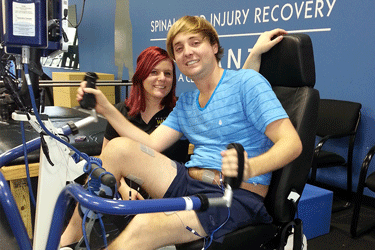Adults who suffered from head injuries were found to have a more than two times higher rate of mortality, according to research from the University of Pennsylvania.
Adults who suffered any head injury during a 30-year study period had two times the rate of mortality than those who did not have any head injury, according to research from the Perelman School of Medicine at the University of Pennsylvania, published in JAMA Neurology.
According to the study, mortality rates among those with moderate or severe head injuries were nearly three times higher.
In the United States, over 23 million adults age 40 or older report a history of head injury with loss of consciousness. Head injuries can be attributed to several causes, including motor vehicle crashes, unintentional falls, or sports injuries.
Head injury has also been linked with many long-term health conditions, including disability, late-onset epilepsy, dementia, and stroke.
Studies previously indicated increased short-term mortality associated with head injuries, primarily among hospitalized patients.
The longitudinal study evaluated 30 years of data from over 13,000 community-dwelling participants (those not hospitalized or living in nursing home facilities) to determine if a head injury impacts adult mortality rates over the long term.
Investigators found that 18.4% of the participants reported one or more head injuries during the study period. Of those who suffered a head injury, 12.4% were recorded as moderate or severe. The median period between a head injury and death was 4.7 years.
Death from all causes was recorded in 64.6% of those individuals who suffered a head injury and 54.6% of those without any head injury. Accounting for participant characteristics, investigators found that the mortality rate from all causes among participants with a head injury was 2.21 times the mortality rate among those with no head injury.
The mortality rate among those with more severe head injuries was 2.87 times that among those with no head injury.
“Our data reveals that head injury is associated with increased mortality rates even long-term. This is particularly the case for individuals with multiple or severe head injuries,” said Holly Elser, MD, PhD, MPH, a Neurology resident at Penn and the study’s lead author. “This highlights the importance of safety measures, like wearing helmets and seatbelts, to prevent head injuries.”
When researchers evaluated specific neurologic causes of death among participants with a head injury, they found that nearly two-thirds were attributed to neurodegenerative diseases like Alzheimer’s and Parkinson’s.
These diseases composed a more significant proportion of overall deaths among individuals with head injury (14.2 %) versus those without (6.6%).
“Study data doesn’t explain why the cause of death in individuals with head injuries is more likely to be from neurodegenerative diseases, which underscores the need for further research into the relationship between these disorders, head injury, and death,” said Andrea L.C. Schneider, MD, PhD, an assistant professor of Neurology at Penn.





